On the use of a PM(2.5) exposure simulator to explain birthweight
- PMID: 21691413
- PMCID: PMC3116241
- DOI: 10.1002/env.1086
On the use of a PM(2.5) exposure simulator to explain birthweight
Abstract
In relating pollution to birth outcomes, maternal exposure has usually been described using monitoring data. Such characterization provides a misrepresentation of exposure as it (i) does not take into account the spatial misalignment between an individual's residence and monitoring sites, and (ii) it ignores the fact that individuals spend most of their time indoors and typically in more than one location. In this paper, we break with previous studies by using a stochastic simulator to describe personal exposure (to particulate matter) and then relate simulated exposures at the individual level to the health outcome (birthweight) rather than aggregating to a selected spatial unit.We propose a hierarchical model that, at the first stage, specifies a linear relationship between birthweight and personal exposure, adjusting for individual risk factors and introduces random spatial effects for the census tract of maternal residence. At the second stage, our hierarchical model specifies the distribution of each individual's personal exposure using the empirical distribution yielded by the stochastic simulator as well as a model for the spatial random effects.We have applied our framework to analyze birthweight data from 14 counties in North Carolina in years 2001 and 2002. We investigate whether there are certain aspects and time windows of exposure that are more detrimental to birthweight by building different exposure metrics which we incorporate, one by one, in our hierarchical model. To assess the difference in relating ambient exposure to birthweight versus personal exposure to birthweight, we compare estimates of the effect of air pollution obtained from hierarchical models that linearly relate ambient exposure and birthweight versus those obtained from our modeling framework.Our analysis does not show a significant effect of PM(2.5) on birthweight for reasons which we discuss. However, our modeling framework serves as a template for analyzing the relationship between personal exposure and longer term health endpoints.
Figures
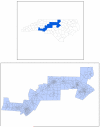

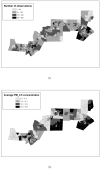
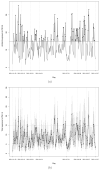
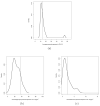
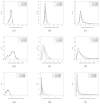
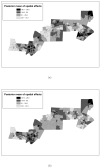

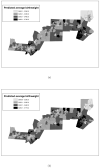
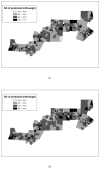
References
-
- Armstrong BK, White E, Saracci R. Principles of exposure measurement in epidemiology. Oxford University Press; 1992.
-
- Banerjee S, Carlin BP, Gelfand AE. Hierarchical Modeling and Analysis for Spatial Data. Chapman & Hall/CRC; Boca Raton, Fla: 2004.
-
- Basu R, Woodruff TJ, Parker JD, Saulnier L, Schoendorf KC. Comparing exposure metrics in the relationship between PM2.5 and birth weight in California. Journal of Exposure Analysis and Environmental Epidemiology. 2004;14:391–396. - PubMed
-
- Besag J. Spatial interaction and the statistical analysis of lattice systems. Journal of the Royal Statistical Society Series B. 1974;36:192–236.
Grants and funding
LinkOut - more resources
Full Text Sources
